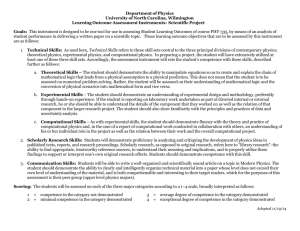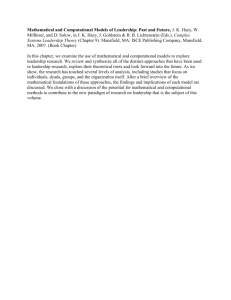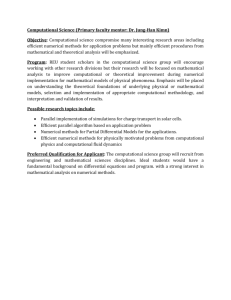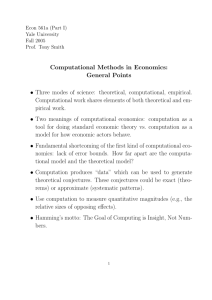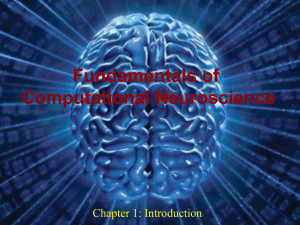Department of Physics University of North Carolina, Wilmington
advertisement
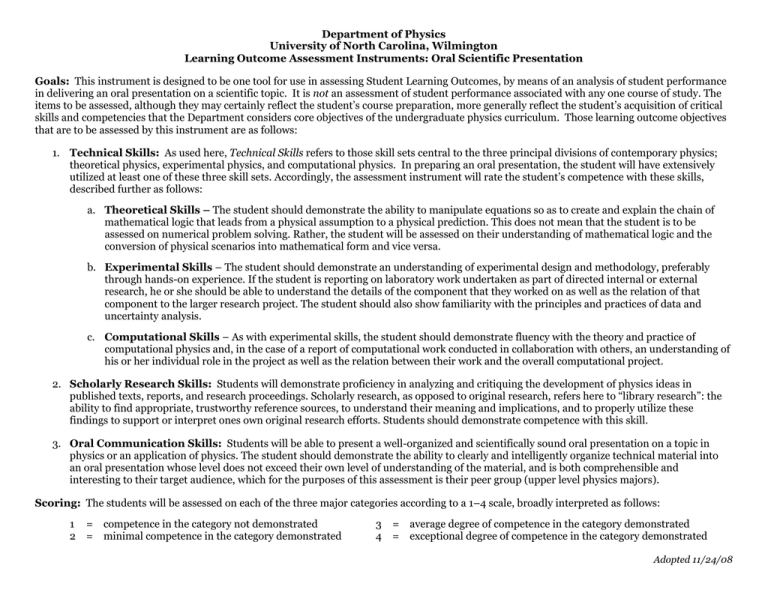
Department of Physics University of North Carolina, Wilmington Learning Outcome Assessment Instruments: Oral Scientific Presentation Goals: This instrument is designed to be one tool for use in assessing Student Learning Outcomes, by means of an analysis of student performance in delivering an oral presentation on a scientific topic. It is not an assessment of student performance associated with any one course of study. The items to be assessed, although they may certainly reflect the student’s course preparation, more generally reflect the student’s acquisition of critical skills and competencies that the Department considers core objectives of the undergraduate physics curriculum. Those learning outcome objectives that are to be assessed by this instrument are as follows: 1. Technical Skills: As used here, Technical Skills refers to those skill sets central to the three principal divisions of contemporary physics; theoretical physics, experimental physics, and computational physics. In preparing an oral presentation, the student will have extensively utilized at least one of these three skill sets. Accordingly, the assessment instrument will rate the student’s competence with these skills, described further as follows: a. Theoretical Skills – The student should demonstrate the ability to manipulate equations so as to create and explain the chain of mathematical logic that leads from a physical assumption to a physical prediction. This does not mean that the student is to be assessed on numerical problem solving. Rather, the student will be assessed on their understanding of mathematical logic and the conversion of physical scenarios into mathematical form and vice versa. b. Experimental Skills – The student should demonstrate an understanding of experimental design and methodology, preferably through hands-on experience. If the student is reporting on laboratory work undertaken as part of directed internal or external research, he or she should be able to understand the details of the component that they worked on as well as the relation of that component to the larger research project. The student should also show familiarity with the principles and practices of data and uncertainty analysis. c. Computational Skills – As with experimental skills, the student should demonstrate fluency with the theory and practice of computational physics and, in the case of a report of computational work conducted in collaboration with others, an understanding of his or her individual role in the project as well as the relation between their work and the overall computational project. 2. Scholarly Research Skills: Students will demonstrate proficiency in analyzing and critiquing the development of physics ideas in published texts, reports, and research proceedings. Scholarly research, as opposed to original research, refers here to “library research”: the ability to find appropriate, trustworthy reference sources, to understand their meaning and implications, and to properly utilize these findings to support or interpret ones own original research efforts. Students should demonstrate competence with this skill. 3. Oral Communication Skills: Students will be able to present a well-organized and scientifically sound oral presentation on a topic in physics or an application of physics. The student should demonstrate the ability to clearly and intelligently organize technical material into an oral presentation whose level does not exceed their own level of understanding of the material, and is both comprehensible and interesting to their target audience, which for the purposes of this assessment is their peer group (upper level physics majors). Scoring: The students will be assessed on each of the three major categories according to a 1–4 scale, broadly interpreted as follows: 1 = competence in the category not demonstrated 2 = minimal competence in the category demonstrated 3 = average degree of competence in the category demonstrated 4 = exceptional degree of competence in the category demonstrated Adopted 11/24/08 Oral Scientific Presentation Scoring Rubric Name _________________ Date______ Competence Level Theoretical Skills Score ____ Technical Skills Experimental Skills Score ____ Computational Skills Score ____ Scholarly Research Skills Score ____ Oral Communication Skills Score ____ 1 2 3 Student merely repeats theoretical arguments acquired from an external source without comprehending the argument, either in general or in detail. Student cannot clearly explain the physical implications of their own argument. He/she is clear on the physical meaning of individual components of their argument or its general thrust, but not both. Student has a good general grasp of the physical content and mathematical logic of their argument, but is unclear on some mathematical or interpretive details. Missing several important experimental details. Very incomplete or incorrect interpretation of trends and comparison of data. Student displays no understanding of data and uncertainty analysis techniques. Still missing important experimental details, but some results have been correctly interpreted and discussed. Student displays rudimentary understanding of data and uncertainty analysis techniques. Student demonstrates no understanding of either the theoretical basis or the implementation of their computational project. The seminar is simply a report of tasks accomplished. Student does not have grasp of the presented information, and cannot answer questions about the subject. The student indiscriminately employs dubious external sources and fails to cite them. Audience cannot follow the presentation. Information is presented in an illogical order. Student mumbles, incorrectly pronounces terms, and speaks too softly. Student demonstrates some understanding of the theoretical basis or the implementation of their computational project, but not both. The student has a limited grasp of the role of their work in the context of the larger research project. Student is uncomfortable with the information presented and can answer only rudimentary questions. The student exercises some discernment in utilizing reliable external sources and sporadically cites them in an inconsistent fashion. Audience has difficulty following the presentation. The student jumps around, blocks slides, uses incorrect pronunciation, and fails to adequately project his/her voice. Important experimental details are covered, but some minor details missing. Most results have been correctly interpreted and discussed. Student has some familiarity –but not facility– with data and uncertainty analysis techniques. Student shows general understanding of the theoretical basis and the implementation of their computational project, but is weak on details. Student has general –but not detailed– understanding of how their work fits in the larger context. Student is at ease with expected answers to all questions, but fails to elaborate adequately. The student mainly utilizes reliable external sources and cites them in some consistent fashion. Student presents information in a logical sequence which the audience can follow. The student speaks clearly and pronounces most words correctly. 4 Student explains the physical content of all equations used, and clearly develops the mathematical and physical reasoning of their argument. He/she provides a coherent synopsis of the physical implications of their analysis. All experimental details are covered, and all trends and data comparisons are interpreted correctly. A good understanding of results is conveyed. Student displays a good grasp of data and uncertainty analysis techniques. Student shows detailed understanding of both the theoretical basis and the implementation of their computational project. The student clearly understands how their computational work supports the allied research project. Student demonstrates full understanding of presented material, and answers all questions with elaborated explanations. The student utilizes reliable external sources and properly cites them according to standard physics practice. Student conveys information in a logical, interesting sequence. He/she speaks clearly and uses correct, precise pronunciation. All audience members can easily follow the presentation.
